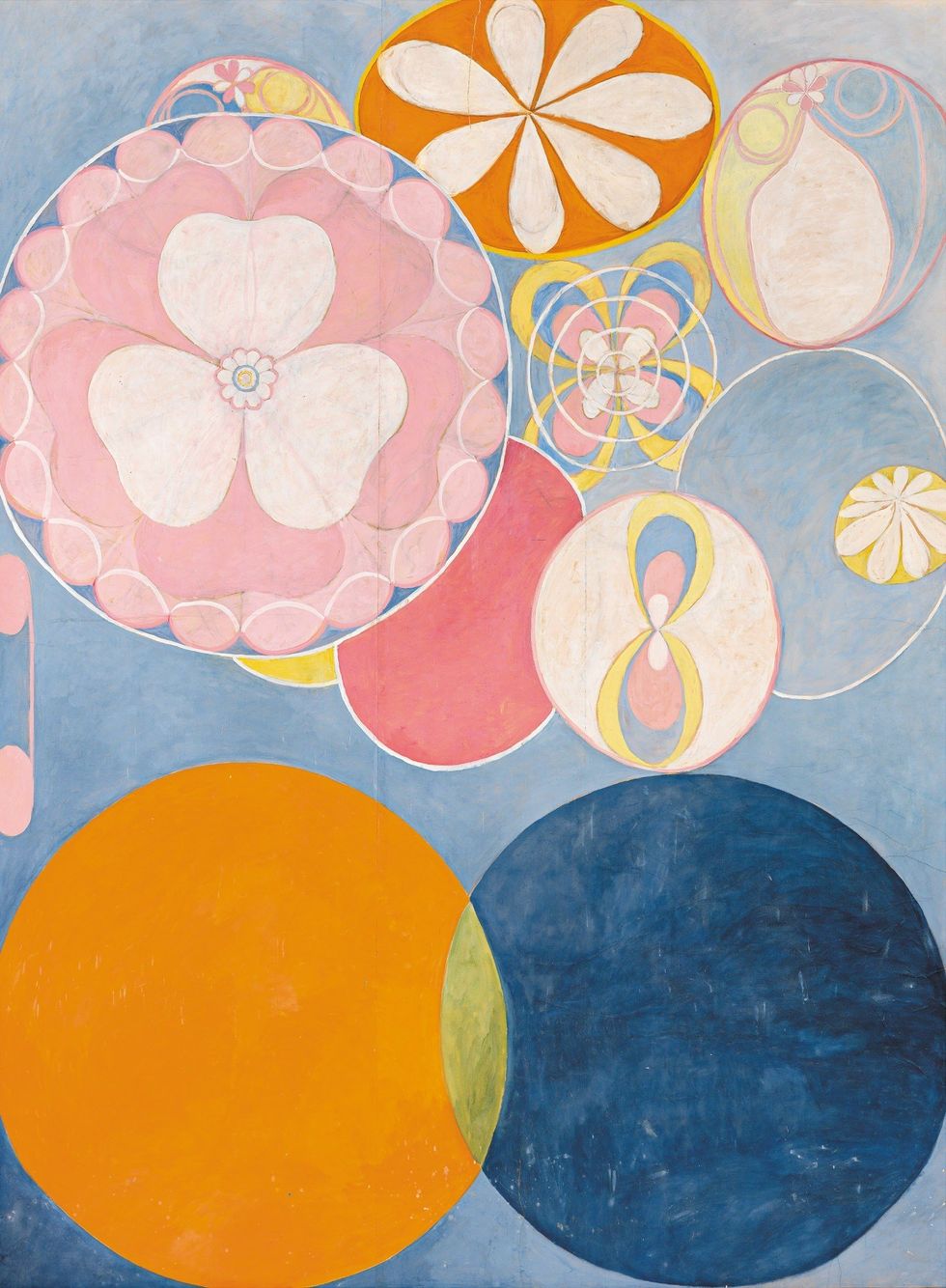What the Novel is About
This novel takes the perspectives of five women, known as De Fem, who lived in Sweden in the early 1900s and began having spiritual meetings together to guide them in the creation of their artwork. Their leader, Hilma af Klint, is now known around the world for her famous art pieces that are said to be the first true abstract paintings. The world simply did not know about them until very recently, as Hilma hid away the paintings as she feared the world was not ready to receive them at the time they were created.
The novel also takes the perspective of Eben, a man living in New York who is bringing their creations to life through an exhibition at the Guggenheim, where he works. This story is fictional, but the exhibition was real. At the close of the exhibit in April 2019, Hilma's art pieces had made it the most visited exhibition at the Guggenheim ever, with 600,000 visitors from its start in October 2018.
What are the Messages?
Hilma's abstract pieces center around spiritual messaging, feminism, roles in society, and the evolution of humans. At the time they were created, talking about spiritual messaging was very taboo and could get someone in trouble, so the five women had to meet in secret. There were two of them who worked as mediums to convey messages from spirits to the other women. It is still unclear whether it was just Hilma or the collaboration of many or even all five of them that worked on the paintings. There are hints of the artistic styles of the other women throughout many paintings, so historians have assumed that it was a collaboration at times.
As I dove deeper into the novel and the artwork of De Fem, I became more and more mesmerized by the story and messages in the paintings. I think a lot of people have dismissed certain pieces of abstract art and maybe made a comment here or there that was something like, "Well, I could paint that, too." I'll admit, I definitely have. Certain abstract paintings haven't spoken to me because of their simplicity and the basic use of colors. But Hilma's paintings have more depth than that and I have changed my stance on abstract art because of it. I think this is the reason the exhibition did so well; it transformed the way people thought of abstract art and they became entranced by the mysteries of Hilma af Klint's life and paintings.
Should We Appreciate Abstract Art More?
There was a quote in the novel that centered around the idea of the common, average person viewing abstract art and not understanding its profound meanings. The quote explained that these people are missing the whole point, not understanding the religious and spiritual process that it took to create the painting. I had never thought of abstract art like that before, and reading the story of De Fem and how they/Hilma created the series such as Paintings For the Futurehas helped me understand the effort and the spiritual process that it takes to create such masterpieces.
I personally now am eager to explore the next Hilma af Klint exhibition in the nearest art museum. I encourage anyone who is interested to read the book, The Friday Night Club, or explore more art museums and the incredible story of the five women who were the pioneers of abstract art.
























